Written by: Hale Ann Tufan, associate director of the Innovation Lab for Crop Improvement and research professor at Cornell Global Development
Tell people the biggest goals for global food security, and you’re bound to get heads nodding in agreement. Eliminating hunger and making the food system equitable for all — two deceptively straightforward and non-controversial aims — garner plenty of support. But take a moment to reflect, and you find complex challenges interwoven so intricately they cannot be untangled.
Many development programs today encourage inclusive development with the aim to benefit those historically marginalized. This same thinking is seeping into the agricultural research system — historically a space of widespread marginalization. Gender training, gender mainstreaming and gender focal points abound, guiding agricultural scientists to do their work with an eye on “gender”. While just having gender consistently in the conversation for agricultural research is a huge mindset change, we are still missing the point. Gender equality should be the guiding goal of agricultural research, not a possible side effect.
First, we need to unpack the word “gender”. In agricultural research we largely reduce gender identity into a binary consideration of men and women, glossing over the wide range of gender identities, expressions and sexual orientations. There are historical reasons why women have been the primary focus, but even if we only focused on cisgender heterosexual women, we cannot see these women as a monolithic group. Just as food systems are complex, so is the global population. How women identify themselves is their own prerogative, and it is not our role to define. To further our gender equality goals, agricultural research systems must embrace intersectionality — how an individual’s multiple social identities combine and intersect to shape their lived experiences. Women come from different places, races, religions, backgrounds, cultures and upbringings. An intervention that may work for some women may not for others. Also, we may inadvertently reinforce class, ethnic or religious divides if we are not careful to intentionally consider intersecting identities of women. In developing and implementing programming, we can be more effective if we embrace complexity and work with disciplines that can help us understand and respond to it.
Second, we need to talk about power. As we promote a wide-angle lens on our food systems, we must consider the power dynamics that exist within agricultural research. Whose voice is heard? Whose is not? It’s not just about men versus women — why do some women have a seat at the table and others do not? If we do not examine power dynamics head on, we will miss an opportunity to bake meaningful participation and voices of the most marginalized women into research agendas. The uncomfortable truth that gender equality goals can only be attained by challenging power structures is ignored at our peril. It is time for moving beyond safe discussions around gender equality and time to think about how agricultural research investments are geared towards long-term change in gender norms and power relations. A central focus on participatory methods, approaches and programming could help agricultural researchers address power dynamics and reflexively incorporate voices in a meaningful way.
I am working with different teams across several projects to explore how we can flip the paradigm: research outputs that are in service of gender equality goals, rather than integrating gender into set research agendas (“add women and stir” approaches). For the Feed the Future Innovation Lab for Crop Improvement, we are putting cross-cutting issues, including gender, at the front and center of everything we do. We are also creating awareness of cross-cultural power dynamics with our team to create inclusive spaces that equally values all voices. In the Gender Responsive Researchers Equipped for Agricultural Transformation (GREAT) program we host training programs for agricultural researchers that focus on exploring personal biases and beliefs on gender, and challenge teams to shift towards interdisciplinarity by valuing different viewpoints. In the NextGen Cassava project we are diving deep into methods that capture detailed demographic information and household characteristics, and relate these to crop preferences to explore nuances in social contexts that shape choices made by individuals and households.
As the global development community eyes 2030 and the goals set forth by the United Nations, we must double down on ensuring the full participation of diverse women who have the strength, expertise and insight to transform their own local food systems. As we celebrate women on International Women’s Day, and push to secure vital investments to fight hunger,
I encourage us to embrace social heterogeneity as much as we embrace crop genetic diversity. We need to dismantle the systematic barriers that hold all women back, regardless of or because of their intersecting identities. Then, we may finally take a step towards our lofty goals: just and equitable food systems that eliminate hunger.
This article was originally published on the Borlaug Blog by the World Food Prize Foundation in honor of Women’s History Month.




